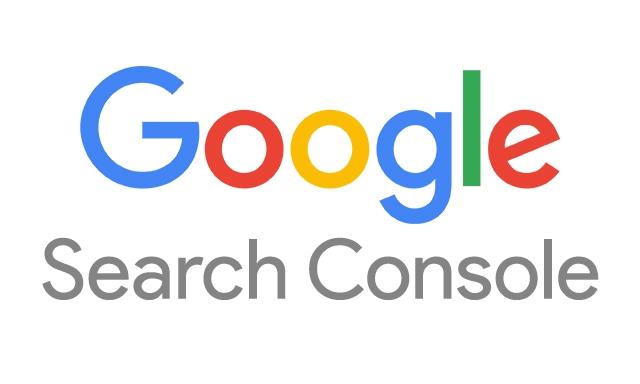Have you ever paused to consider just how much we rely on Google Search in our daily lives? From finding the perfect recipe for dinner to researching a complex topic for work, Google has become our go-to digital companion. But beyond its everyday utility lies a treasure trove of fascinating statistics adn data trends that reveal the true power of this search engine. In this article, we’re diving deep into the numbers and trends that not only highlight Google’s dominance in the digital landscape but also uncover how user behavior is evolving in the face of new technologies.Whether you’re a marketer looking to leverage SEO strategies, a business owner wanting to connect with your audience, or just a curious mind, understanding these key statistics will arm you with insights that can transform how you engage with the world. So,let’s explore the remarkable landscape of Google Search together and discover what it all means for us today!
The Evolution of Google Search and Its Impact on User Behavior
Over the years, Google Search has undergone a remarkable transformation, adapting to the changing digital landscape and user expectations. From its humble beginnings as a simple search engine, it has evolved into a complex, AI-driven platform that tailors results to individual user needs. This evolution has had profound implications for user behavior, shaping not only how we search but also what we expect from search engines.
Key developments in Google Search include:
- Algorithm Updates: Frequent updates like Panda,Penguin,and Hummingbird have refined search result quality,pushing websites to prioritize user experience.
- Voice Search: The rise of smart speakers and voice assistants has transformed how queries are made, leading to a more conversational search approach.
- Featured Snippets and Rich results: These elements provide instant answers, reducing the need for users to click through to websites, thereby changing engagement metrics.
The impact of these changes on user behavior is notable. Searchers are now more inclined to rely on the answers presented directly in search results, often leading to shorter sessions on websites. This shift has prompted businesses to reconsider their SEO strategies,focusing on optimizing for featured snippets and improving content quality to capture attention in a crowded marketplace.
Moreover,the personalization of search results has created a more tailored experience.Google uses data from a user’s search history, location, and preferences to deliver results that are most relevant to them. This phenomenon has led to an increased expectation for immediacy and relevance in all online interactions.
| User Behavior Changes | Impact on SEO Strategy |
|---|---|
| Increased use of voice search | Focus on natural language and long-tail keywords |
| Preference for speedy answers | Emphasis on featured snippets and FAQ sections |
| Heightened mobile usage | Optimization for mobile-first indexing |
The culmination of these factors has made Google Search an indispensable tool, not just for finding information but for shaping our very approach to knowledge acquisition. Understanding this evolution and its impact on user behavior is crucial for businesses and content creators aiming to thrive in the digital age.
Understanding Google Search Algorithms for Better Visibility
In the ever-evolving landscape of online search, understanding the intricacies of search algorithms is crucial for brands and content creators aiming to enhance their visibility. Google, as the leading search engine, employs a myriad of algorithms to determine which pages appear on the coveted first page of search results. By grasping the basics of how these algorithms function, you can better tailor your content and strategies to align with Google’s expectations.
One basic aspect of Google’s algorithms is their focus on user intent. This means that content must not only be optimized for keywords but also meet the needs and expectations of the user behind the search. It’s essential to consider:
- Relevance: Ensure your content directly addresses the query being made.
- Quality: produce high-quality, well-researched content that provides real value.
- Engagement: Create content that encourages user interaction, such as comments and shares.
Another critical factor is mobile optimization. With a significant percentage of searches now conducted on mobile devices, Google prioritizes sites that offer a seamless mobile experience. Implementing responsive design not only improves user experience but also positively affects your search rankings. Here are some key elements to focus on:
- Loading Speed: optimize images and minimize code for faster loading times.
- Navigation: Ensure user-friendly navigation that is easy to access on smaller screens.
- Content Layout: Use larger fonts and buttons to enhance readability on mobile devices.
Additionally, Google values backlinks as a measure of content authority. Quality backlinks from reputable sites signal to Google that your content is trustworthy and worth promoting. To enhance your backlink profile, consider engaging in:
- guest Blogging: Write articles for other relevant blogs in your industry.
- Social Media Promotion: share your content across various platforms to increase visibility.
- Networking: Build relationships with influencers who can amplify your reach.
| Search Algorithm Element | Importance Level |
|---|---|
| user Intent | High |
| Mobile Optimization | High |
| Backlinks | Medium |
| Content Quality | Very High |
By leveraging these insights, brands can substantially enhance their search visibility. Staying informed about updates to Google’s algorithms and adjusting your strategies accordingly will keep you one step ahead in the digital landscape. This proactive approach not only improves your chances of ranking higher but also strengthens your online presence and authority.
Exploring the Latest Trends in Search Queries and User Intent
In the ever-evolving landscape of digital marketing, understanding search queries and user intent has become crucial for businesses aiming to enhance their online visibility. recent studies indicate that over 70% of users prefer personalized search results,highlighting the importance of tailoring content to meet specific user needs. This shift in user behavior is shaping how brands approach their SEO strategies.
One of the dominant trends in search queries is the rise of voice search, fueled by the increasing popularity of smart speakers and virtual assistants. Statistics show that nearly 50% of all searches are conducted through voice, which often leads to more conversational and question-based queries.Businesses must adapt their keyword strategies accordingly, focusing on long-tail keywords and natural language to stay relevant in this new search paradigm.
Another noteworthy trend is the growing meaning of local search. With mobile devices enabling on-the-go searches, users are increasingly seeking products and services in their vicinity.In fact, 76% of people who conduct a local search visit a business within a day. To capitalize on this trend, companies should ensure their local SEO practices are robust, utilizing tools like Google My Business to enhance their online presence.
Key Takeaways from Recent Data Trends
| Trend | Statistic |
|---|---|
| Personalized Search Results | 70% of users prefer |
| Voice Search Usage | 50% of all searches |
| Local Searches leading to Visits | 76% of local searchers |
Moreover, as search engines continue to refine their algorithms to prioritize user experience, the concept of search intent has gained prominence. Users now expect search results to align closely with their needs—be it informational, navigational, or transactional.To effectively engage audiences, brands should invest in understanding these intents and optimizing their content accordingly.
lastly, the growing use of visual search technologies is transforming the way users interact with search engines. Visual search allows users to search for information using images, leading to a shift in keyword optimization strategies. Companies should consider integrating high-quality images and videos into their content to enhance engagement and improve their chances of being discovered through visual search.

Mobile search: The Shift Towards Mobile-First Indexing
The digital landscape is rapidly evolving, and one of the most significant shifts we’ve seen in recent years is the move towards mobile-first indexing. As smartphone usage continues to skyrocket, search engines like Google are prioritizing mobile versions of websites to deliver the best user experience. This change influences not just how content is indexed but how businesses need to approach their online presence.
Understanding the implications of mobile-first indexing is crucial for anyone looking to enhance their online visibility. Here are some compelling reasons to prioritize mobile optimization:
- Increased User Engagement: Mobile users tend to interact with content more than desktop users, leading to lower bounce rates and higher conversions.
- Enhanced Local Search: With mobile searches frequently enough tied to local intent,optimizing for mobile can definitely help capture local customers actively searching for your services.
- Improved SEO Performance: Sites optimized for mobile are favored in search rankings, making it critical for businesses to adapt their strategies.
To illustrate the impact of mobile-first indexing, consider the following statistics:
| statistic | Percentage |
|---|---|
| Mobile Traffic Share | 54.8% |
| Local Mobile Searches | 76% |
| Conversions from Mobile Searches | 64% |
As these numbers highlight, the mobile experience is not just an afterthought; it’s a necessity. Businesses that fail to optimize their sites for mobile may find themselves losing potential customers to competitors who have embraced this shift. key elements to focus on include:
- Responsive Design: Ensure your website adapts to various screen sizes for seamless navigation.
- Fast Load Times: Mobile users are often on the go; a slow site can lead to frustration and abandonment.
- Mobile-Friendly content: Use concise, engaging content that caters to the mobile user experience.
The transition to mobile-first indexing is not just a trend; it’s a fundamental change in how users engage with online content. By prioritizing a mobile-first strategy, businesses can not only stay relevant in an ever-changing digital landscape but also thrive in it.

Local Search Optimization: Why It Matters More Than Ever
in today’s digital landscape, local search optimization has become a critical component for businesses aiming to capture nearby customers. With over 46% of all Google searches seeking local information, it’s clear that optimizing your online presence for local visibility can significantly impact foot traffic and revenue.
As consumers increasingly turn to their mobile devices for instant answers, local search results are more essential than ever. Here are some key reasons why local search optimization deserves your attention:
- Increased visibility: By optimizing your Google My Business listing, you can enhance your visibility in local searches and Google Maps, making it easier for potential customers to find you.
- Targeted Traffic: Local searches often indicate high purchase intent.Most users searching for local businesses are looking to make a decision quickly, meaning they’re more likely to convert into paying customers.
- Competitive Advantage: Many businesses still overlook local SEO strategies. By optimizing your site, you can outrank your competitors and establish yourself as a go-to source in your area.
Moreover, the rise of voice search has further amplified the need for local search optimization. With more people using voice-activated devices to find services near them, businesses that focus on local SEO can leverage this trend to attract more customers. A recent study found that 58% of consumers have used voice search to find local business information.
To effectively implement local search optimization, consider the following strategies:
- Claim and Optimize Your Google My Business Profile: Ensure all information is accurate and up-to-date, including your address, phone number, and business hours.
- Focus on Local Keywords: Use location-specific keywords throughout your website content to enhance relevance in local searches.
- Encourage Customer Reviews: Positive reviews can improve your rankings and influence potential customers. Engage with your reviewers to build trust and credibility.
| Local SEO Strategy | Impact |
|---|---|
| google My Business Optimization | Higher visibility in local searches |
| Local Keywords | Improved relevance and ranking |
| Customer Reviews | Increased trust and conversion rates |
As the digital marketplace evolves, local search optimization is no longer optional; it’s a necessity. Businesses that embrace local SEO will not only enhance their online presence but also forge stronger connections within their communities. The time to act is now—don’t let your competitors outshine you in the local search game!
The role of Voice Search in shaping Future queries
Voice search is transforming the way users interact with search engines, ushering in a new era of digital queries. With the prevalence of smart speakers and voice-activated devices, more people are opting for conversational queries rather than traditional text-based searches. This shift is not just a trend; it’s a revolution in how we seek information, and it’s essential for businesses to understand the implications.
As voice recognition technology improves, the accuracy and efficiency of voice searches are reaching unprecedented levels. Users are increasingly cozy asking their devices complex questions, making the way we optimize our content crucial. Here are some key aspects to consider:
- Natural Language Processing: Voice search queries tend to be more natural and conversational. This means businesses need to adapt their SEO strategies to include long-tail keywords and phrases that mimic how people speak.
- Local Search Optimization: Many voice searches are location-based. Users frequently enough search for services “near me,” making local SEO optimization more critical than ever. Companies should ensure their online presence is optimized for local queries.
- Snippet Optimization: Voice assistants frequently enough pull information from featured snippets.crafting content that directly answers common questions can increase the chances of being highlighted in voice search results.
To illustrate the impact of voice search on query formulation, here’s a simple table showcasing the differences in search query types:
| Search Type | Text-Based Queries | Voice Search Queries |
|---|---|---|
| Length | Short and Keyword-Focused | Longer and Conversational |
| Intent | Direct | Contextual and informative |
| Example | “Pizza NYC” | “Where can I find the best pizza in New York City?” |
As businesses adapt to this shift, it’s crucial to consider the implications for content creation and marketing strategies. Prioritizing voice-friendly content can lead to higher visibility and engagement. It’s not just about being found; it’s about resonating with users in a personalized, conversational manner. The future of queries is here, and it’s time to embrace it.

Leveraging Data Analytics to Enhance Your SEO Strategy
In today’s digital landscape, understanding your audience and their behavior is crucial for any prosperous SEO strategy. By leveraging data analytics,businesses can gain insights into user interactions,search patterns,and the effectiveness of their content.Utilizing this information can lead to a more tailored approach, optimizing your website for the keywords that truly matter.
One of the most effective ways to enhance your SEO strategy is by analyzing search intent.By examining the keywords that bring users to your site, you can identify what they are genuinely looking for. Tools like Google Analytics and Google Search Console provide valuable data on:
- Click-through rates (CTR) for different keywords
- User demographics to tailor content
- Page performance metrics to adjust loading speeds
Moreover,keeping an eye on emerging trends can position your content ahead of the competition. Regularly reviewing search trends allows marketers to pivot quickly, responding to fluctuations in consumer interests. As an example, seasonal trends can influence what keywords are valuable at any given time. You can easily track these shifts by:
- Utilizing Google Trends to spot rising topics
- Analyzing competitive content for gaps in your own strategy
- Monitoring social media for trending discussions
Additionally, employing a data-driven approach ensures that you are not just guessing what works best for your audience. By collecting data on user behavior, such as time spent on site, bounce rates, and conversion paths, you can refine your content strategy. Utilize the following table to summarize key performance indicators that can guide your SEO efforts:
| Metric | Importance |
|---|---|
| Page Views | Indicates content popularity |
| Bounce Rate | Assesses content relevance |
| Average Time on Page | Measures engagement level |
| conversion Rate | Tracks effectiveness of CTAs |
Incorporating these insights into your SEO strategy not only enhances your website’s visibility but also fosters a deeper connection with your audience. By continuously analyzing data and adjusting your tactics accordingly, you create a dynamic SEO strategy that evolves with your consumers’ needs, ensuring sustained growth and relevance in an ever-changing digital world.

The Importance of User Experience in Google Rankings
User experience (UX) plays a crucial role in determining how well a website ranks on Google.The search engine’s algorithms increasingly prioritize user satisfaction, which means that visitors’ interactions with your site can directly impact its visibility. Here’s why focusing on UX is essential for optimizing your Google rankings:
- Engagement Metrics Matter: Google analyzes various engagement metrics, such as bounce rate, time on site, and pages per session. A website that provides a seamless and enjoyable experience encourages users to stay longer and explore more, which can improve these metrics.
- Mobile Optimization is Key: With a significant portion of searches coming from mobile devices,having a mobile-friendly design is non-negotiable. Google uses mobile-first indexing, meaning it primarily considers the mobile version of your site for rankings. A responsive design enhances user experience and boosts your chances of ranking higher.
- Page Load Speed: Slow-loading pages frustrate users and can increase bounce rates. Google has made it clear that page speed is a ranking factor, so optimizing your site’s load time benefits both user experience and SEO.
In addition to these metrics, the design and usability of your site are fundamental. An intuitive layout and easy navigation help users find what they need quickly, reducing frustration and promoting longer visits. Here’s a quick look at some key elements of effective UX:
| Element | Importance |
|---|---|
| Clear Call-to-Actions | guide users to take desired actions effectively. |
| Readable Content | Ensures information is accessible and engaging. |
| Consistent Branding | Builds trust and recognition with users. |
Ultimately, a positive user experience doesn’t just benefit your visitors; it creates a favorable perception of your brand, encouraging repeat visits and referrals. Investing in UX design is not just an aesthetic choice; it’s a strategic move that can significantly enhance your site’s performance in Google rankings.

Emerging Technologies transforming the Search Landscape
As the digital landscape continues to evolve, emerging technologies are reshaping how users interact with search engines, notably Google Search. This transformation is not just about algorithms; it’s about understanding user intent and delivering content in increasingly sophisticated ways. From artificial intelligence to voice search, these innovations are revolutionizing the search experience.
Artificial Intelligence (AI) plays a pivotal role in refining search algorithms. Machine learning models analyze vast amounts of data to predict user behavior, making search results more relevant than ever. Google’s RankBrain is a prime example, interpreting complex queries and learning from user interactions to enhance search accuracy.
Voice Search is another game-changer. With the rise of smart speakers and virtual assistants, users are shifting towards natural language queries. This trend emphasizes the importance of long-tail keywords and conversational content, as more people search using phrases rather than single keywords.Businesses must adapt their SEO strategies to meet this demand, focusing on optimizing for voice search.
Visual search technology is gaining traction as well. Platforms like Google Lens allow users to search using images rather than text. This evolution encourages brands to invest in high-quality visual content and ensure their images are optimized for search. The ability to quickly identify products and information through images is not just convenient; it’s also driving higher engagement rates.
| Technology | Impact on Search |
|---|---|
| AI Algorithms | Improved relevance & accuracy |
| Voice Search | Shift to natural language queries |
| Visual Search | Enhanced user engagement |
Furthermore, Augmented Reality (AR) and Virtual Reality (VR) are set to integrate into search experiences. Imagine searching for home decor and being able to visualize how a piece of furniture would look in your space before making a purchase.Such immersive experiences not only engage users but also drive conversions, making search a more integral part of the buying journey.

Actionable Tips for Staying Ahead in Google Search Trends
To remain competitive in the rapidly evolving landscape of Google Search, it’s essential to implement a proactive approach. Here are some strategies you can adopt:
- Regularly Monitor Google Trends: Make it a habit to check Google Trends at least once a week. Understanding what’s currently popular can help you tailor your content to meet user demands.
- Utilize Keyword Research Tools: Leverage tools like Ahrefs, SEMrush, or Moz to identify high-performing keywords and phrases relevant to your niche. Focus on long-tail keywords to capture specific search intents.
- Engage with Social Media: Trends frequently enough originate on social media platforms. Keep an eye on trending hashtags and topics to identify potential content opportunities for your audience.
- Optimize for Featured Snippets: Structure your content to answer questions succinctly. Use bullet points and FAQs, making it easier for Google to feature your content in search results.
Another effective technique is to enhance your website’s overall performance. Google prioritizes sites that offer superior user experience, so consider the following:
- Mobile Optimization: Ensure your site is mobile-friendly. With mobile searches dominating, a responsive design is crucial for capturing traffic.
- Improve Page Load Speed: A slow website can turn visitors away. Optimize images,reduce redirects,and leverage browser caching to boost loading times.
- Content Freshness: Regularly update your existing content to keep it relevant. Adding new insights, statistics, or multimedia elements can breathe new life into older posts.
consider setting up a content calendar that aligns with seasonal trends and major events. This will help you plan targeted campaigns and capitalize on peak search times. Use the table below to outline important dates for your niche:
| Month | Key events/Trends | Content Ideas |
|---|---|---|
| January | New year Resolutions | How to Stick to Your Goals |
| April | Spring Cleaning | Organizing Tips for Home and Office |
| October | Halloween | DIY Costume Ideas |
| December | Holiday Shopping | Gift Guides and Reviews |
By staying informed and agile, you can effectively navigate the shifting tides of Google Search trends, ensuring your content remains relevant and compelling to your audience.
frequently Asked Questions (FAQ)
Q&A: Google Search – Key Statistics and data Trends
Q: Why should I care about google Search statistics?
A: Great question! Understanding Google Search statistics is essential because it not only highlights how people are searching for information but also reveals trends that can help businesses and marketers tailor their strategies effectively. With over 90% of the global search market,Google is the gateway to information for billions of users. Knowing how search behaves can give you a competitive edge!
Q: What are the most remarkable statistics about Google Search?
A: There are quite a few jaw-dropping stats! For starters, Google processes over 3.5 billion searches per day! That’s about 40,000 searches every second. Additionally, around 15% of daily searches have never been seen before, which means there’s always new content and information being sought out. These numbers underscore the vastness and dynamism of search behavior!
Q: How can businesses leverage this data?
A: Businesses can use these insights to optimize their online presence. Knowing that 70% of the links search users click on are organic results, companies can focus on improving their SEO strategies. Additionally, understanding trending searches can help brands to create relevant content that meets the needs of their target audience. it’s all about being where your customers are looking!
Q: What about mobile search? Why is it important?
A: Mobile search is a game-changer! Over 60% of all Google searches are now conducted on mobile devices. This shift means that businesses must prioritize mobile-friendly websites and content. If your site isn’t optimized for mobile, you’re likely missing out on a huge chunk of potential traffic. Plus, with the rise of voice search, adapting your strategy to cater to mobile users will only become more critical.
Q: What trends should we be aware of in the future?
A: One significant trend is the growing importance of artificial intelligence (AI) in search algorithms,like Google’s RankBrain. This means that search results are becoming more intuitive and personalized. Additionally, the rise of video content, particularly on platforms like YouTube (owned by Google), indicates that businesses should consider diversifying their content strategies. Keeping an eye on these trends will help you stay ahead of the curve.
Q: How frequently enough do these statistics change, and should I keep checking?
A: Absolutely! Search trends and statistics can change rapidly, influenced by user behavior, global events, and technological advancements. It’s beneficial to stay updated with regular reports from trusted sources and industry blogs. This way,you can adapt your strategies in real-time and remain relevant in the ever-evolving digital landscape.
Q: Any final thoughts on why understanding Google Search is essential?
A: To put it simply, Google Search is a reflection of society’s information needs and preferences. By understanding its statistics and trends, you can better align your business goals with consumer behavior. This understanding ultimately leads to improved engagement, higher conversion rates, and long-term success. So don’t overlook it—embrace it!
Concluding Remarks
As we wrap up our exploration of Google Search, it’s clear that understanding its key statistics and data trends is more than just a numbers game; it’s about leveraging this knowledge to navigate the digital landscape effectively. From the staggering volume of daily searches to the evolving algorithms that shape user experience, the insights we’ve uncovered empower businesses, marketers, and content creators alike.
So, whether you’re looking to improve your SEO strategies or simply curious about how search trends can impact your daily life, keep these statistics in mind. They’re not just figures on a page; they represent real opportunities for growth and engagement in an ever-changing online world.
In this fast-paced digital age,staying informed is your best asset. So go ahead—apply what you’ve learned today and watch how it transforms your approach to online visibility. After all,in a world driven by search,knowledge isn’t just power; it’s the key to unlocking success. Happy searching!




